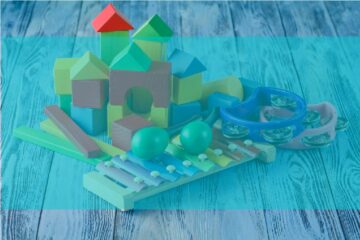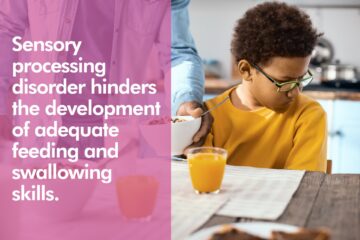Auditory Milestones: From 2-3 Years Old

Listening skills are crucial for the achievement of auditory milestones. Yes, you got it right! Hearing though is necessary but not enough to develop auditory milestones. The hearing ability of your child provides crucial sensory information. However, the auditory brain plays a vital role in sensory information integration and interpretation. Additionally, it plays a crucial role in a child’s cognitive, social and emotional development. Therefore, in the first few years of your child’s growth, even the mild hearing issue (otitis media) or loss (mild hearing loss) can delay the auditory milestones. It may impact his cognitive and language development and speech clarity. But how do you know your child is facing a delay in auditory milestones.
you can also see: http://terteeb.org/blog/2021/05/24/joint-attention-an-important-tool-for-communication-cognition-development/

Our expert Speech and Language Pathologists in the field of auditory training have prepared a list of auditory milestones for you. Here is the list, along with the range and variety of activities that your child can do for hearing and auditory milestone achievement. Because it is crucial for us as parents to know how well our child’s auditory skills have matured. Therefore, we will discuss everything related to auditory milestones from 2-3 years in detail in this blog.
you can also read: https: //www.terteeb.org/blog/2021/05/27/pediatric-auditory-milestones-birth-to-2-years/

Lets view at what are the milestone or steps our young toddler may achieve during this age.
Auditory milestones and related expressive language skills
| Hearing and auditory skills | Expressive language skills | |
| First thing first, your 2-year-old baby understands concepts of antonym, for example, run & walk, on & off, and full & empty. | Most importantly, the baby has now acquired words for almost everything that is in his surrounding. His vocabulary consists of nouns and verbs. | |
| Second, auditory memory to hold two commands. | your child can now follow 2 step commands such as “Get the glass and place it on the table.” | |
| Furthermore, your 2 years old’s speech and language ability have expanded as his imitation abilities matured. | ||
| Development of the theory of mind | Now, s/he can talk about things that are not there physically in the room. | |
| Thirdly your child comprehends new words more quickly. | In other words, your child’s auditory skills may be developing because now he can use the sounds. As phonological repertoire grows, and the child can articulate /g, t, d, k, f, t,n, d / sounds, his vocabulary also increases. | |
| Because his proprioceptive skills are growing along with vocabulary, his phrases include prepositions such as on, in, under, or over. | ||
| As a result of his auditory skills, your toddler is now ready to use 2-3 word phrases to request the things he wants or likes. | ||
| Due to his auditory milestone achievement, people in your circle can comprehend his speech better. | ||
| Above all, your child asks you, “Why?”. Therefore it is safe to say your child’s auditory-verbal skills are developing at a sound pace. | ||
| In consequence of maturing auditory milestones, your baby can use 3-word phrases. As a result, he can communicate his needs during this stage. In addition to this, your baby can also repeat a few sounds and words. |

Home Activities to Develop Auditory milestones (2-3 years)
- The first thing you can do to augment his auditory skills is to talk clearly with your child using short phrases.
- Secondly, parents can repeat what the child is saying, adding to it through the one-up rule. If he/she says, “that’s a ball,” you can add by saying, “Yes, that is a big black ball.” “Do you want to play with it? Let’s try kicking it.”
- Additional fun activities could be singing songs, telling rhymes, and playing fun finger games.
- These activities are helpful to improve your child’s auditory-verbal skills.
- Additionally, you can also talk about shapes and colors.
- Furthermore writing simple phrases beneath each of the pictures. like“I can paint” or “Happy birthday to mama.”
- Above all though the activity, your child will start to understand that the letters mean something.
- Another activity could be designed using pictures. For example, talk about a picture in a book that you’re reading to your child.
- Most importantly, it would help if you named each object you see.
- Moreover, another home-based activity that you can do is put some objects into a toy box or a bucket gradually.
- Meanwhile, you can allow the child to take them out gradually while saying their name.
- During this activity, you can also assist the child with grouping objects and toys into categories: wild animals, pets, clothes, and food.
- During this activity, parents can also cut out pictures from old books, magazines to make a scrapbook so that a discussion can be done on it.
- Moreover, the activity can be made fun of by taking names of the pictures and discussing little details about them.
- Above all, you need to wait for the answer, consequently praising him/her as he/she answers.

Conclusion
Over all it is most important that your activities be short, fun and exciting. In other words you need to keep the child engaged so he can participate and learn.
References
https://www.asha.org/public/speech/development/01/
Datta, G., Kitterick, P. T., & Ramirez-Inscoe, J. (2018). Development and validation of the Nottingham Auditory Milestones (NAMES) profile for deaf children under 2 years old, using cochlear implants. Cochlear implants international, 19(4), 181-192.
Eisenberg, L. S., Martinez, A. S., & Boothroyd, A. (2007). Assessing auditory capabilities in young children. International Journal of Pediatric Otorhinolaryngology, 71(9), 1339-1350.
Estabrooks, W., MacIver-Lux, K., & Rhoades, E. A. (Eds.). (2016). Auditory-verbal therapy: For young children with hearing loss and their families, and the practitioners who guide them. Plural Publishing.



0 Comments